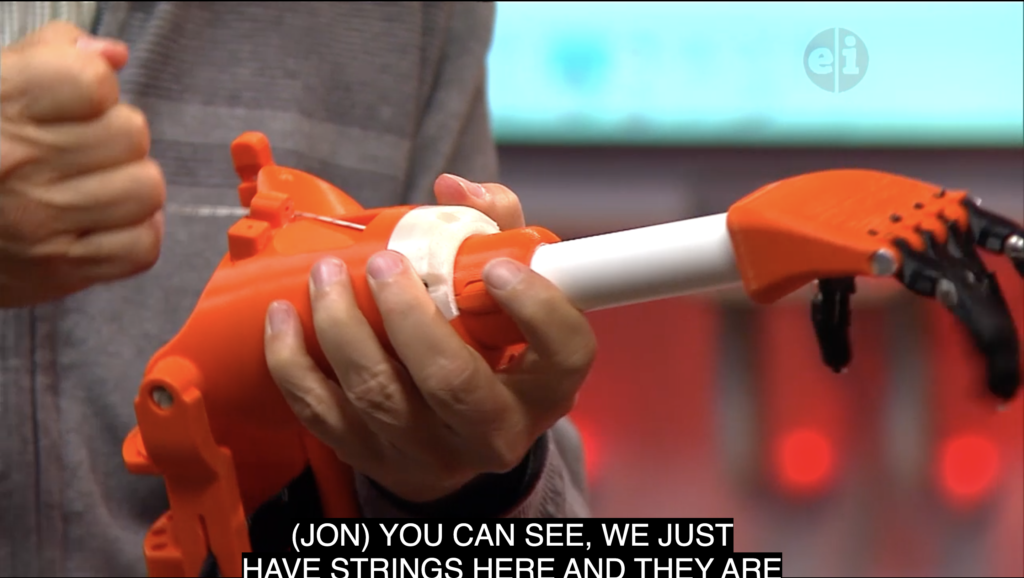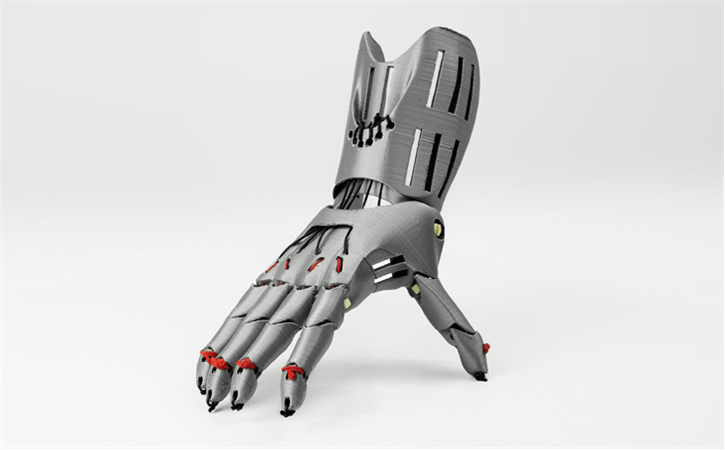Assistive technology is a term that describes tools used by people with disabilities to accomplish tasks. For this blog entry, the assistive technology I chose to discuss is 3-D printing prosthetics design. I was introduced to this technology through PBS’s program Move to Include. (Link to 3-D prosthetics segment) Move to Include is a PBS-produced collection of videos and activities designed to promote inclusion for people with disabilities.
3D printing, also known as additive manufacturing, is a digital fabrication method that builds physical items from a geometrical model by quickly adding materials, creating a three-dimensional object layer by layer. 3-D printing Technology has grown significantly in the past decade and influenced many sectors, including the agricultural, healthcare, and transportation industries. (Aniket Jadhav)
Open-source solutions crafted by designers
Thus, when I saw designers and researchers creating 3-D printed prosthetics, I was instantly intrigued. I believe the open-source designs and accessibility of the technology have a lot of potential to efficiently mass produce and help many people. In my opinion, this line of assistive technology falls into the functional solutions model because it emphasizes the rights of people to have access to prostheses so that they can participate in society in meaningful ways. Still, it aims to eliminate these limitations through advancements in technology or methodology.
In this particular PBS segment, the various designs are introduced by Professor Jon Schull of the Rochester Institute of Technology. Schull explains that people would be able to print their prosthetics themselves at their homes and would be able to 3-D print new ones as they grow older and may need a larger prosthetic. And, Currently, due to limitations, Schulls explains they are currently only designing prosthetic arms and hands. Schull says he was inspired to pursue this research by a video he watched several years back of a man in South Africa who had accidentally severed the fingers on his right hand. The man in the video explained he could not afford a prosthetic hand because it cost upwards of $20,000. Thus, Shull knew there was a need to be able to get prosthetics to people with lower incomes cost-effectively.
One size doesn’t fit all
Unfortunately, I believe this reflects the horrid state of late-stage capitalism we are in, where people in need cannot receive the medical devices that would help them live their lives. Further, the assembly process does seem somewhat complex, and I have to wonder about the quality control of a 3-D printed prosthetic. To assemble the prosthetics, one must 3-D print the prosthetic, attach strings to enable connection from the limb to the prosthetic, and finally fasten it together using screws. In theory, if people are expected to 3-D print these prosthetics themselves at home, there is a high probability that no one will likely be trained to provide quality assurance on the device to ensure it is safe and up to the working code. Quality control can sometimes take a highly trained team with multiple processes of checks and balances to ensure a product’s quality is maintained — and I don’t think it’s fair to leave that up to chance and risk a faulty or, in the worst case, a dangerous prosthetic to use.

The benefits can outweigh the limitations
The limitations of this prosthetic limb technology are important to address, and I would be curious to know how Jon Schull and his team of researchers plan to combat these issues moving forward. However, I still find the technology to 3-D print prosthetics overall innovative and cutting edge — and I hope the designers making these can access further resources and funding to spread their work over the globe. Because I genuinely believe this prosthetic limb technology can benefit people in need through cooperation and guidance with healthcare providers.
Citations
Jadhav , Aniket, and Jadhav, Vijay . “A Review on 3D Printing: An Additive Manufacturing Technology.” Elsevier Ltd., 2022, https://doi.org/10.1016/j.matpr.2022.02.558 2214-7853/. Accessed 1 Feb. 2023.
Keszler, Mary. “What You Should Know Before Getting a Prosthetic Leg.” Hopkinsmedicine.Org, 2 Jan. 2021. Accessed 1 Feb. 2023.
“3-D Printing Prosthetics Design & Creation with Professor Jon Schull from RIT | Move to Include.” Ny.Pbslearningmedia.Org, uploaded by PBS, 2 Jan. 2019, ny.pbslearningmedia.org/resource/mti17.3dprinting.prosthetics.interview/3-d-printing-prosthetics-design-creation-with-professor-jon-schull-from-rit-move-to-include/.
“The Future of 3D-printed Prosthetics.” Techcrunch.Com, 26 Jun. 2016, Accessed 2 Feb. 2023
